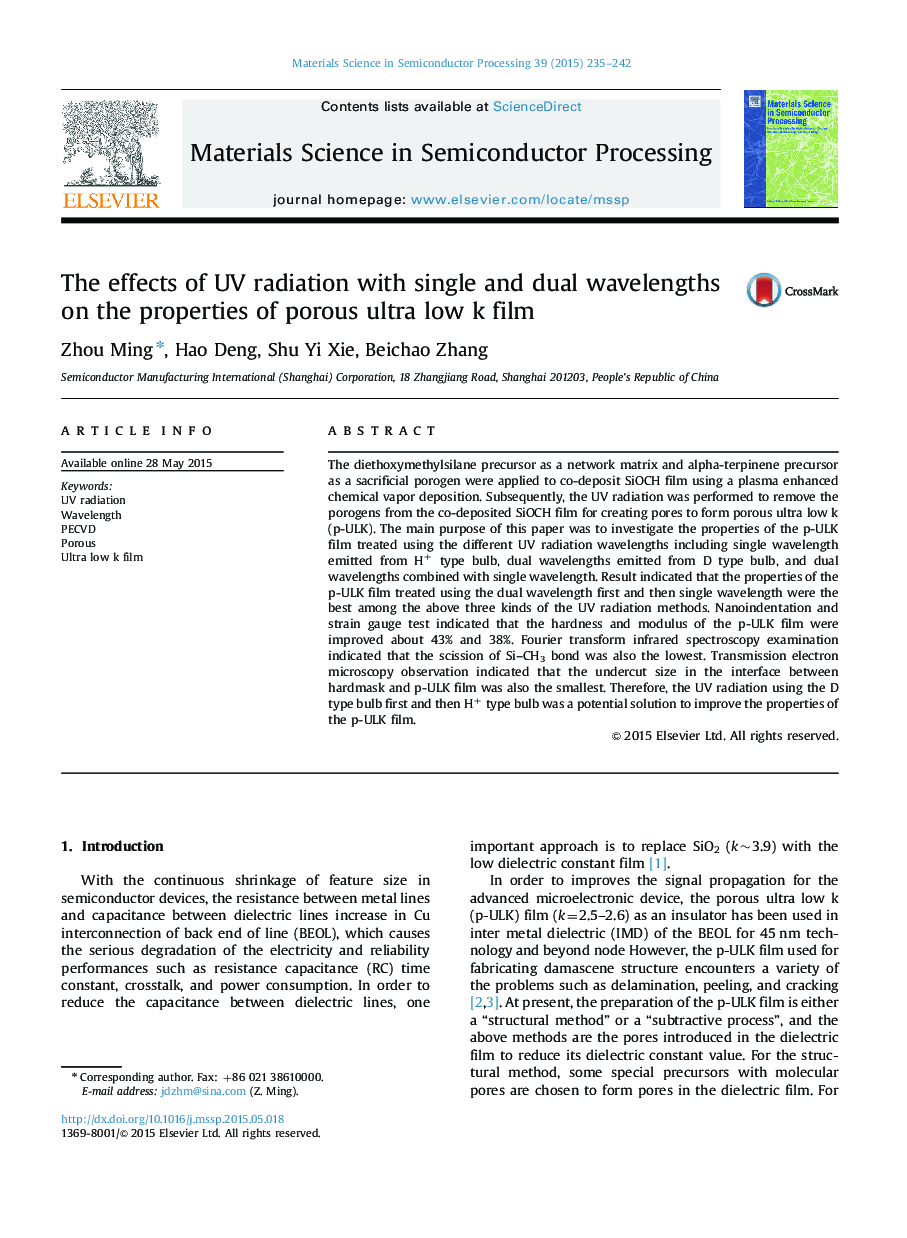| Article ID | Journal | Published Year | Pages | File Type |
|---|---|---|---|---|
| 7118850 | Materials Science in Semiconductor Processing | 2015 | 8 Pages |
Abstract
The diethoxymethylsilane precursor as a network matrix and alpha-terpinene precursor as a sacrificial porogen were applied to co-deposit SiOCH film using a plasma enhanced chemical vapor deposition. Subsequently, the UV radiation was performed to remove the porogens from the co-deposited SiOCH film for creating pores to form porous ultra low k (p-ULK). The main purpose of this paper was to investigate the properties of the p-ULK film treated using the different UV radiation wavelengths including single wavelength emitted from H+ type bulb, dual wavelengths emitted from D type bulb, and dual wavelengths combined with single wavelength. Result indicated that the properties of the p-ULK film treated using the dual wavelength first and then single wavelength were the best among the above three kinds of the UV radiation methods. Nanoindentation and strain gauge test indicated that the hardness and modulus of the p-ULK film were improved about 43% and 38%. Fourier transform infrared spectroscopy examination indicated that the scission of Si-CH3 bond was also the lowest. Transmission electron microscopy observation indicated that the undercut size in the interface between hardmask and p-ULK film was also the smallest. Therefore, the UV radiation using the D type bulb first and then H+ type bulb was a potential solution to improve the properties of the p-ULK film.
Keywords
Related Topics
Physical Sciences and Engineering
Engineering
Electrical and Electronic Engineering
Authors
Zhou Ming, Hao Deng, Shu Yi Xie, Beichao Zhang,
